Nature Inspired Coding Lessons from the Animal Kingdom
Nature Inspired Coding Lessons from the Animal Kingdom
Coding seems new, but nature has managed complex systems for millions of years. These natural systems share surprising similarities with how we write code today. Studying animal behaviors reveals valuable nature inspired coding lessons that can help you learn coding. These lessons help beginners understand computer programming concepts more easily, and improve their coding skills their coding skills .This article explores the animal kingdom has influenced some of the most interesting ideas in computer science and how these concepts are available for free.
What is Nature-inspired Coding?
Nature inspired coding applies patterns from the natural world to solve problems in computer science, including various topics covered . Ants finding the shortest path to food inspired route-optimization algorithms. Birds flying in perfect formation shaped our approach to responsive web design. Nature-inspired algorithms are real-world tools that help students grasp programming concepts. They connect these ideas to everyday things we see.
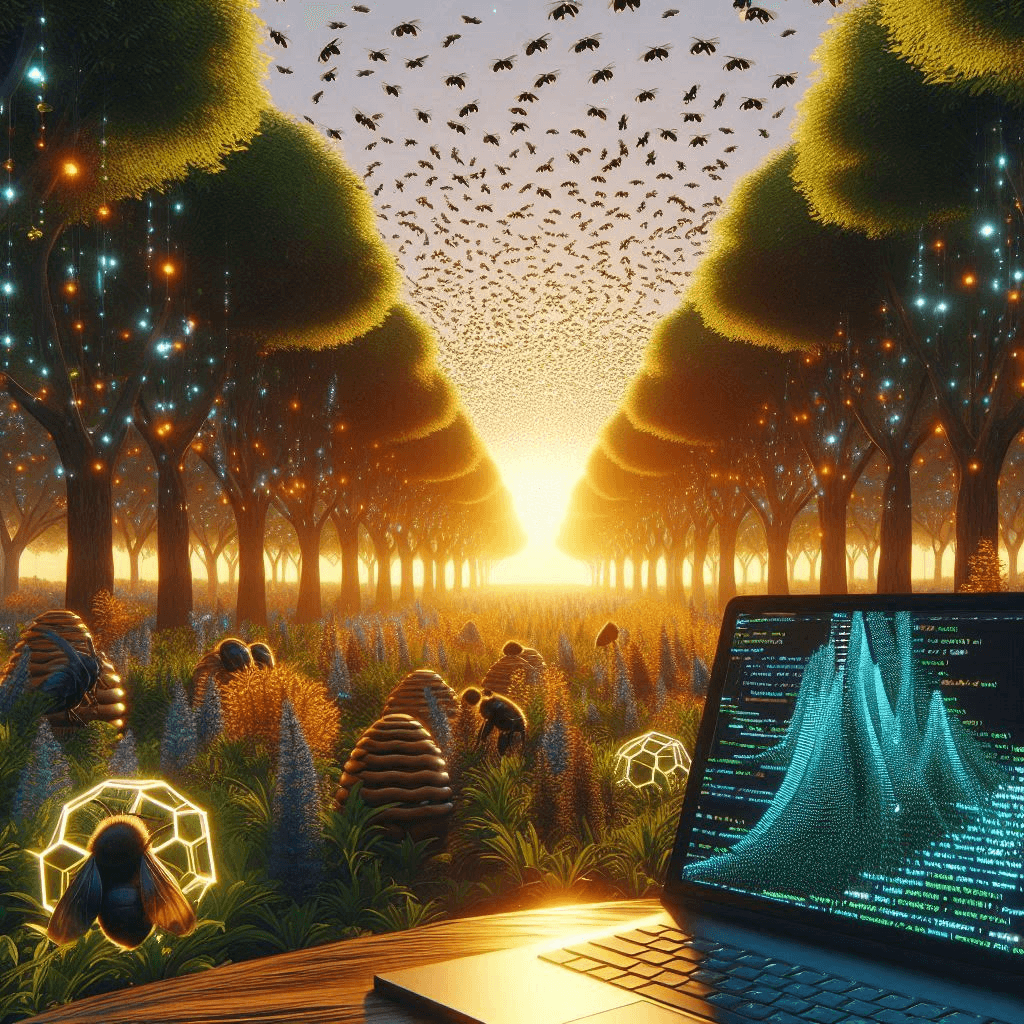
This approach works in coding courses, both online and in-person. Many coding classes online include this method to help learners relate to abstract concepts more easily. Comparing object-oriented programming to beehives helps learners understand it better, just like regular expressions simplify pattern matching . It makes the syntax and structure easy to understand. Many software engineering teams now use these natural models that helps in creating better algorithms and data structures.
What Animals Can Teach Us About Coding Logic
Many creatures exhibit behaviours that reflect computing logic.We can see these patterns and relate them to core programming concepts. This makes learning more engaging and easier to understand.
Let’s explore some examples of nature inspired coding lessons from the animal world that can inspire new projects:
Ants and Dijkstra’s Algorithm
Ant colonies are great at finding the shortest path to food. They leave pheromones as they go and other ants follow the strongest scent. This is like Dijkstra’s Algorithm, which many programmers use in software development. It’s a data structure in GPS apps that helps find the best routes.
Why it matters:
Simplified graph traversal: Think of ant trails as a live map updating in real time. Nodes (intersections) and edges (roads) become self-explanatory.
Real-world impact: Ride-sharing apps use this logic to save fuel and time. Imagine coding a delivery app that re-routes drivers like ants avoiding obstacles.
Try this next time:
For Beginners: Join coding classes online that teach path finding with Python. Try coding a mini “ant simulator” to plot routes between points.
Explore how games like Pokemon GO that use similar algorithms to guide virtual characters.
Bird Flocking and Parallel Processing
Watch a flock of birds moving as one unit - no leader, no collisions, just coordination. This natural phenomenon shows parallel processing and there are many free resources available for further learn. This is an important idea in computer science. It means that many tasks can occur at the same time. Each bird changes its flight to match its neighbours. This is like modern web development. It handles many user requests at the same time without crashing.
Why This Matters for Programmers
Platforms like Instagram and Netflix use these principles daily. When millions share stories or stream shows, servers spread the load. This way, no single point can fail, much like birds sharing the sky. This method enables responsive web design. It allows elements to adjust smoothly to various screen sizes. Flocking behavior helps beginners learn coding. It makes complex algorithms feel real instead of just an idea, enhancing your skills.
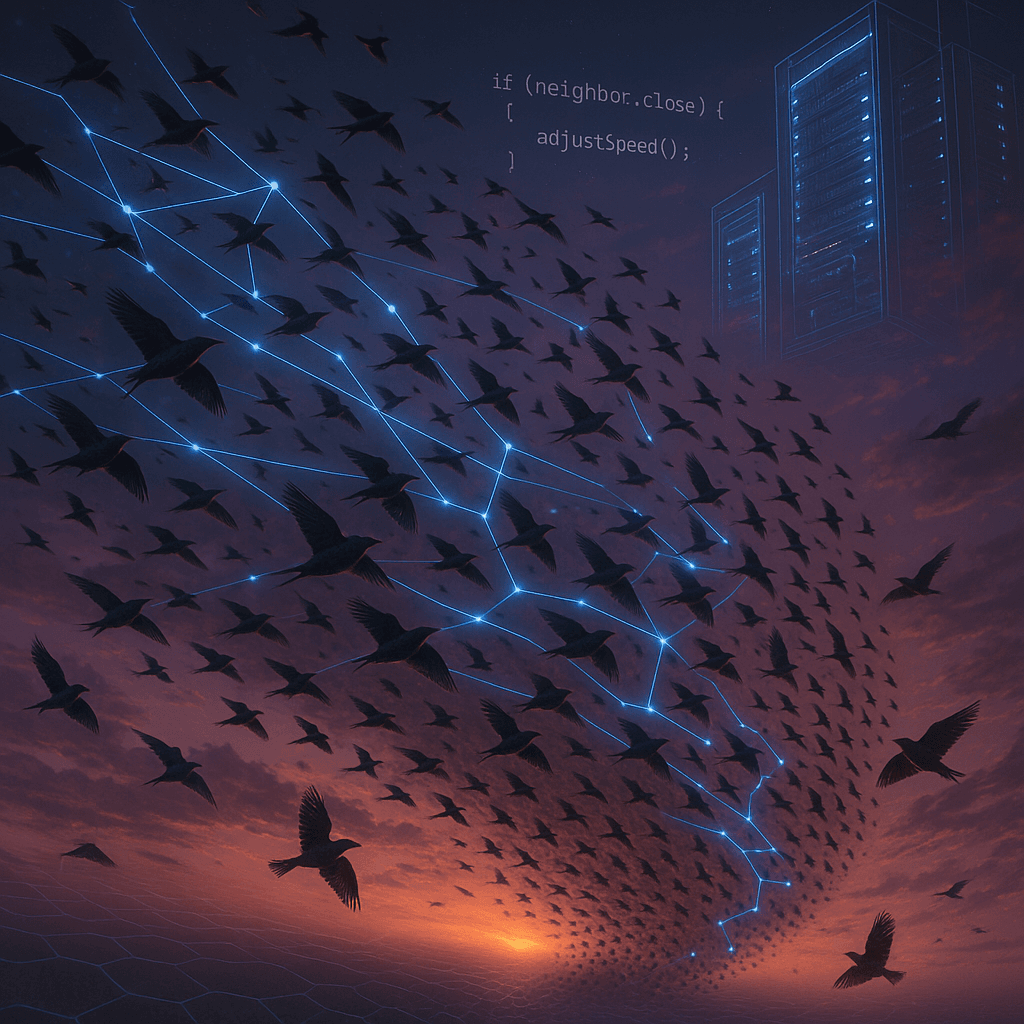
Hands-On Learning Opportunities
For Web Developers: Use JavaScript libraries like p5.js to create flocking animations. Simple rules can lead to complex, organic motion. This is excellent practice for dynamic interfaces.
For Game Designers: Study Unity's particle systems. Their flocking simulations create realistic crowd scenes in games. This includes everything from zombie hordes to schools of fish.
Bees and Decision Trees
Bees have perfected democracy long before humans did. Scout bees find possible hive spots then they return and do "waggle dances" to convince the colony. This voting system works like decision tree algorithms in machine learning. It splits data into branches to make classifications. These algorithms help computers find a new home, even without prior experience. They ask simple yes/no questions, like "Is this email spam?"" or "Should we approve this loan?"
Your email's spam filter uses decision trees to protect your inbox, while banks rely on them to evaluate loan applications. Data science projects also use bee-inspired methods. These methods help predict things like weather patterns and stock market trends. For beginners learning to code, bees making group decisions can help simplify logic and structure.
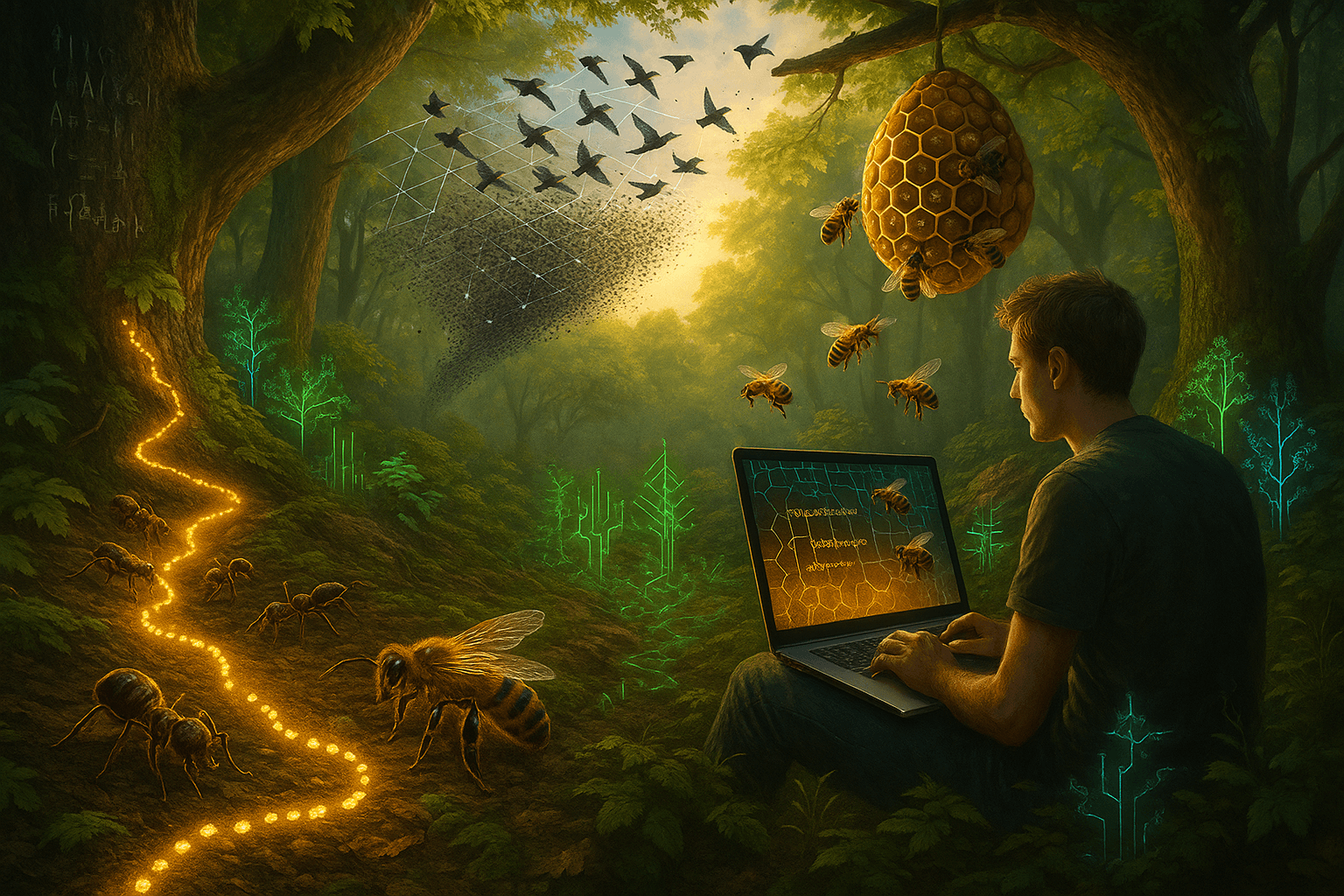
Start with Python's Scikit-learn library for building your first decision tree model. Many coding courses use bee analogies to explain machine learning. These examples help students understand how algorithms think.
Spiders and Network Design
Spiders make their webs with an amazing skill. Their designs are great tools and models for computer science network design. They show how spiderwebs connect to relational databases and content delivery networks (CDNs). Each silk thread links together, like how data pathways work in web development. For beginners learning a programming language, this analogy simplifies complex networking concepts.
The spider's web teaches two crucial skills for software engineering: Fault tolerance and Efficient design. When one thread breaks, the web still functions - exactly how robust networks re-route traffic during server failures. Major companies like Amazon use similar principles to handle massive sales events. Real-world examples show why coding courses include network design. If you are changing careers or learning new skills, getting these concepts is helpful.
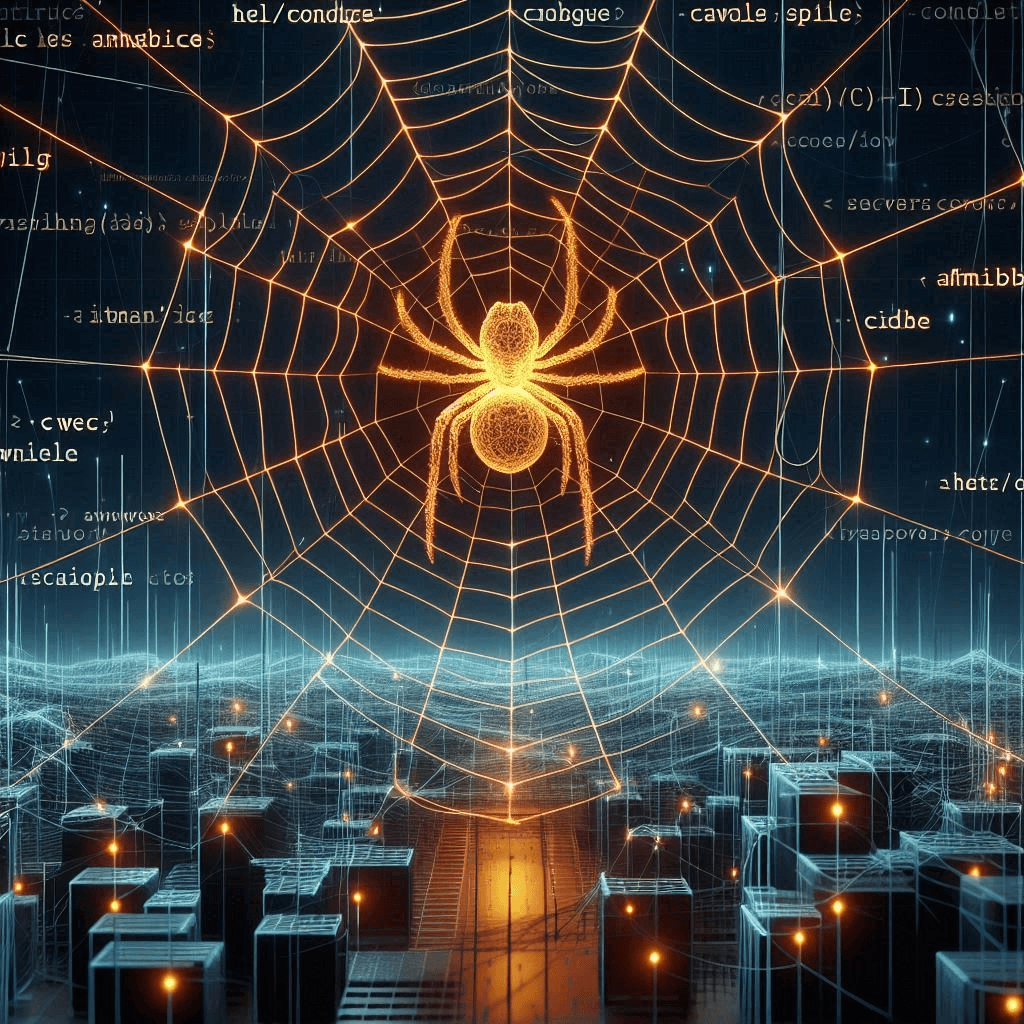
Web developers can apply these lessons immediately. Practice HTML/CSS grid layouts to see how "webs" of code create responsive web design. If you are curious about networking, consider taking coding classes on TCP/IP protocols.
Spiderweb analogies can help you understand the syntax and structure better. Whether you pick JavaScript, Python, or SQL, these lessons inspired by nature help you create a strong foundation for reliable systems. Start with the basics. Then, build your knowledge with hands-on projects.
Wolves and Distributed Systems
Wolf packs show great teamwork without a leader. They act like distributed systems in computer programming. This coding lesson draws from nature to explain complex software engineering ideas that are available for free. It covers topics like scalability and decentralized networks. Animal analogies help beginners learning Python or JavaScript. They make tough topics, like object-oriented programming, feel easier. The same principles drive technologies like blockchain and responsive web design.
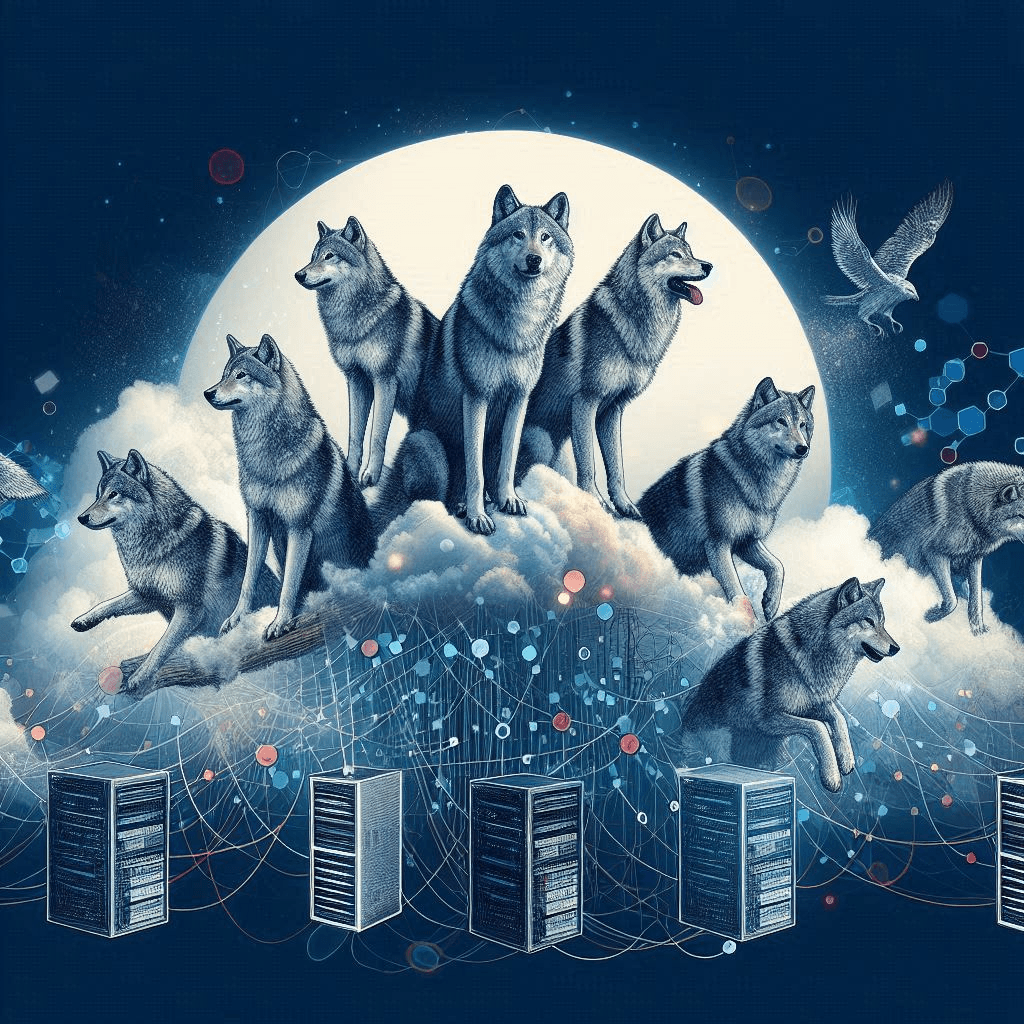
Like wolves on a hunt, computers in distributed systems team up to tackle tasks. They can process data science calculations or run multiplayer game servers. Coding classes use these comparisons to help students see how parts work together. Even career changers find that nature-inspired explanations help them understand programming concepts fast.
There are many paths for beginners who are willing to develop their skills. Guided projects in coding courses allows you to practice by building peer-to-peer applications. You can find free online resources and video lectures. Start with one language like Python for Machine Learning. As you progress from basic to advanced topics, remember that nature has already solved many coding problems we face today.
Octopuses and Artificial Intelligence
The octopus demonstrates powerful nature inspired coding lessons through its unique distributed nervous system. Each of their eight arms can taste, touch, and move on their own. They still work together with the central brain, just like how AI handles many data inputs at once. This example helps beginners search for and grasp complex machine learning ideas in computer science. It shows how distributed processing makes problem-solving easier.
For those looking to learn coding, octopus intelligence offers practical insights into parallel processing and algorithms. Smart home devices learn from user patterns by analyzing different inputs. Similarly, octopuses demonstrate how decentralized systems can adapt and change. Coding courses now use biological examples that help students see how Python and JavaScript can process information better.
Developers can apply these nature inspired coding lessons through hands-on projects. Learners can try out simple neural networks to classify cephalopod species. This helps them gain practical data science skills. If you're interested in game development or generative AI, look at octopus camouflage. It can inspire you to create adaptive systems. These exercises often appear in coding class projects. They show how biological systems can inspire computer programming.
Table with key lessons from the animal kingdom:
Animal | Behavior | Coding Concept | Key Lesson | Practical Application |
|---|---|---|---|---|
Ants | Pheromone path optimization | Dijkstra’s Algorithm | Collective shortest-path finding via dynamic trails | GPS navigation, logistics algorithms |
Birds | Flocking without collisions | Parallel Processing | Decentralized coordination for scalable systems | Server load balancing, responsive UIs |
Bees | Waggle dance voting | Decision Trees | Branching logic for classification problems | Spam filters, predictive modeling |
Spiders | Resilient web construction | Network Design | Redundant connections ensure fault tolerance | CDNs, distributed databases |
Wolves | Leaderless pack coordination | Distributed Systems | Decentralized teamwork enhances scalability | Blockchain, cloud computing |
Octopuses | Distributed nervous system | AI/Neural Networks | Parallel processing with adaptive learning | Smart devices, generative AI |
Conclusion
The animal kingdom offers the most elegant coding lessons, if we pay attention. Ants teach us optimization, bees demonstrate decision-making, and octopuses show adaptive intelligence. These aren't just nature facts; they are also tools used in programming .They are real strategies used in programming. This includes responsive web design and AI development.
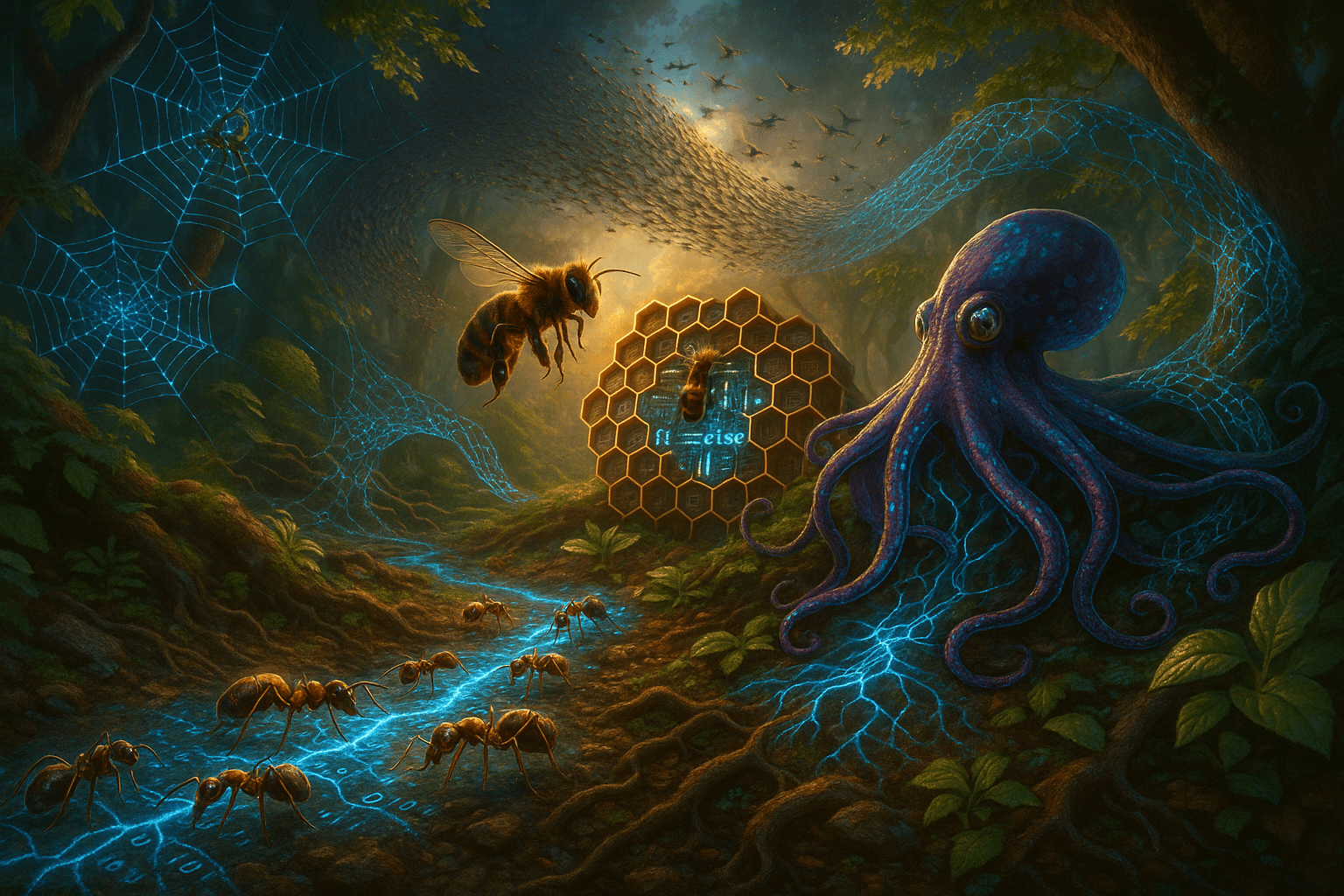
They transform complex concepts into simple ideas you can actually use. The next time you are stuck on a coding challenge, ask: How would nature solve this?
Nature's blueprints can boost your learning. Learning Python, data science, or machine learning can help you improve quickly. The best coding courses often incorporate these principles because they work.
Nature Inspired Coding Lessons – FAQs
Why are nature inspired coding lessons effective for beginners?
These nature inspired coding lessons explain coding concepts using real-world examples. For example, they use Ant trails and Bird flocks. They make abstract ideas in computer programming feel familiar and concrete. This approach helps complete beginners focus on learning and feel less frustrated and not feel overwhelmed by the complexity of coding. It builds confidence at a faster rate than traditional methods. Many coding courses use analogies to help learners understand algorithms and data structures, especially when they learn to code online.
How do ants help explain path finding algorithms in programming?
Ants use pheromone trails to show the best paths to food. This is like how Dijkstra's algorithm finds the shortest routes in programming. This natural example helps students visualize web development routing problems. You can even re-create ant behavior using simple CSS animations. It's a perfect introduction to nature inspired algorithms for new programmers.
Can nature based coding examples improve engagement in online classes?
Yes, using nature analogies in coding classes online makes lessons more interactive and helps students grasp difficult concepts easier. Comparing object oriented programming to beehives or spiderwebs makes video lectures more interactive. Students remember concepts better when connected with nature's patterns. Top coding classes online report higher completion rates when using these methods.
What do bird flocking patterns teach about parallel processing?
Birds move in sync without colliding. It’s like how computers handle many tasks at once. This shows how responsive web design manages user interactions smoothly. Understanding this helps developers create better software. It's a core concept in Game development and Artificial Intelligence, essential for developing your programming skills. These concepts are often covered in the best coding courses for beginners.
How does a spider’s web relate to computer network design?
A web's interconnected threads resemble how relational databases link information. Both need strong connections without weak points. This analogy helps explain network protocols in coding courses. Seeing nature's version of data structures makes technical syntax less scary for learners.
Are nature inspired coding lessons suitable for kids and first-time coders?
Kids quickly grasp animal behaviours, making these perfect for first-time coders. Simple examples like Ant trails teach programming basics without any complexity. Many beginner programs now use nature themes to introduce Python or JavaScript as the primary programming language. Start learning with these nature-inspired coding lessons, even if you have no experience. The animal kingdom has the world’s oldest guided projects.